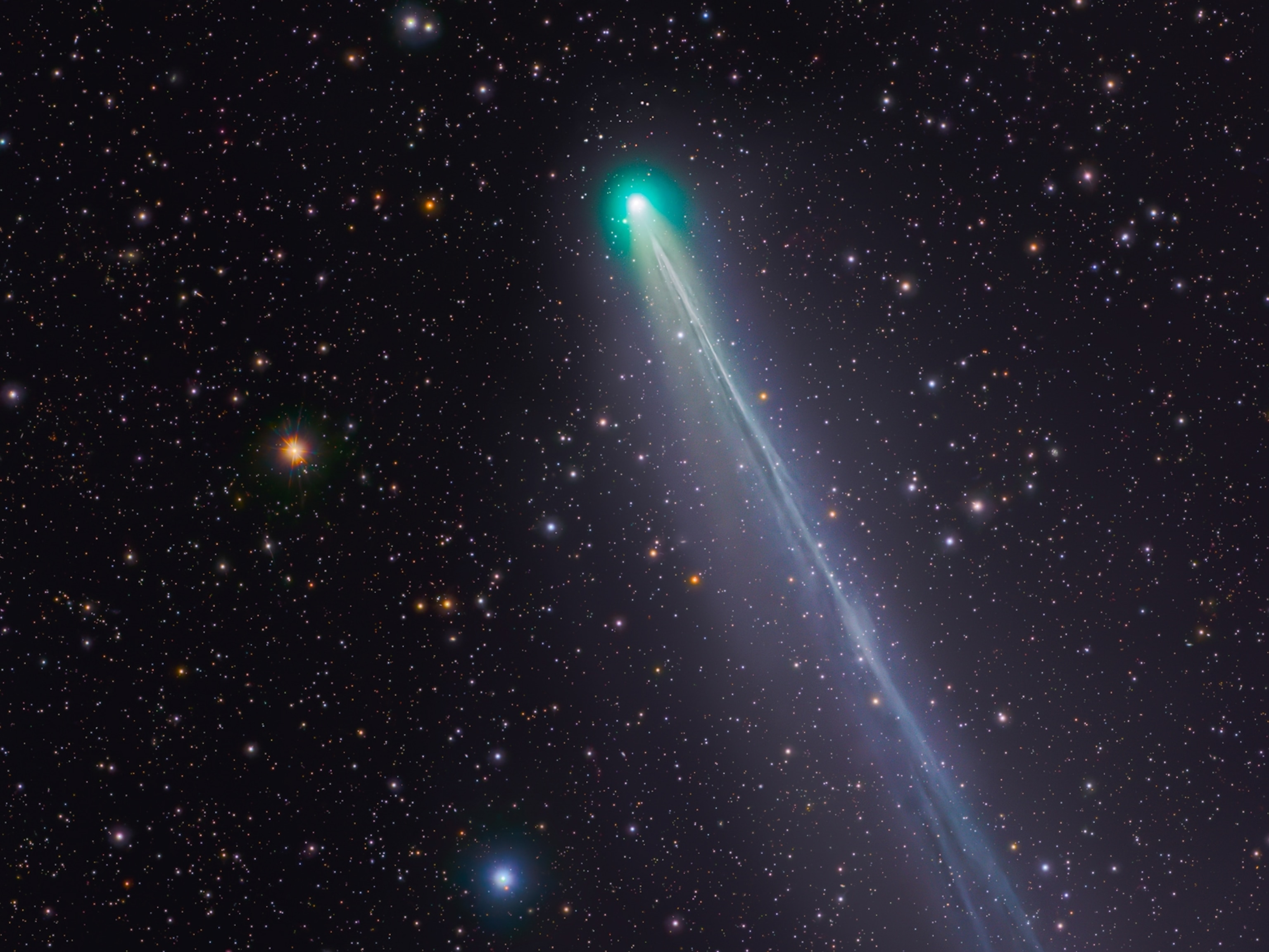
What Do Florida and a Comet Have in Common? Sinkholes
Mysterious pits on the surface of Comet 67P/Churyumov-Gerasimenko may have formed when the ground beneath them collapsed, say Rosetta mission scientists.
Sinkholes on Earth tend to get attention only when they swallow vehicles or buildings. But in space, it’s much different.
A new study shows that mysterious, steep-sided pits—one up to 600 feet wide and 600 feet deep—discovered by the Rosetta spacecraft on the surface of comet 67P/Churyumov-Gerasimenko are probably sinkholes caused by weaknesses in the ground beneath the comet’s surface. And this could offer clues into how old the comet is and how it came to be.
Scientists spotted the pits right away, when Rosetta became the first probe in history to orbit a comet last summer, but they were too busy mapping the comet’s craggy surface to think much about them. “We had no idea what they were,” says planetary scientist Jean-Baptiste Vincent, of the Max Planck Institute for Solar System Research in Göttingen, Germany. Vincent is lead author of a new paper in the journal Nature that explains the pits. To do this, researchers considered possible explanations for the pits’ origins.
It’s unlikely this or the others are impact craters, says Vincent, because incoming meteorites wouldn’t create such steep-sided holes.
And they probably weren’t caused by subsurface ice being warmed by the sun and exploding outward. That does happen on 67/P, as Rosetta found last year, but at a much smaller scale than needed to create these enormous pits.
Another explanation—that the holes are created from the top down as ice escapes gradually into space, leaving only rock behind—is also implausible, says Vincent. “We can see jets of dust and gas coming from inside some of the pits,” he says, “and we measured how much dust was coming out. It was minor. It would have taken forever to create the pits this way.”
In the end, the team settled on the idea that the pits came from the bottom up. The believe gaps somehow formed beneath the surface, and the pits were formed as the comet’s crust collapsed inward.
Scientists know the comet is far less dense than solid rock, and even less dense than ice. That means there must be gaps inside—something comet experts have long believed to be true.
If the gaps are large, then the comet was likely formed when rock-sized pieces stuck together early in the solar system’s history. But if the gaps are smaller and more numerous, then the original pieces were already much smaller when they combined into the comet.
The pits also offer clues to the comet's age. Passage near the sun forces ice to escape, weakening the comet’s internal structure until the remaining rock collapses, filling the gaps and letting the surface fall in. Over time, Vincent expects, the loss of additional ice from the walls of the pits will tend to weaken them, eroding the sides so that the pits become smoother and smoother until eventually they disappear. “It’s a bit like what you see in asteroids," Vincent says, “but in reverse.” If you see lots of circular features on an asteroid, which is mostly rock, it’s very old, because the asteroid has been struck by large numbers of meteorites. “With comets,” he says, “the more pits you see, the younger it is." That’s consistent with the history of 67/P, which scientists believe only began coming close to the sun after spending most of its life in the deep freeze of the outer solar system about 70 years ago.
There’s still the open question about whether 67/P is a loose aggregation of rocks and ice or a more finely grained clump of ice and pebbles mixed together. That question could be answered in coming months. The Philae lander, which went silent shortly after it touched down on the comet last fall, has suddenly awakened. Working in concert with the Rosetta orbiter, it could do a far more more detailed analysis of the 67/P’s internal structure than anything the mission has achieved so far.
And that probably won't be the end of the discoveries. Rosetta was originally approved to accompany 67/P as the comet makes its closest approach to the sun on August 13, then keep studying it through December. But the European Space Agency has extended the mission to September, 2016. It’s impossible to predict how much scientists will learn about these once-mysterious objects in that time.





